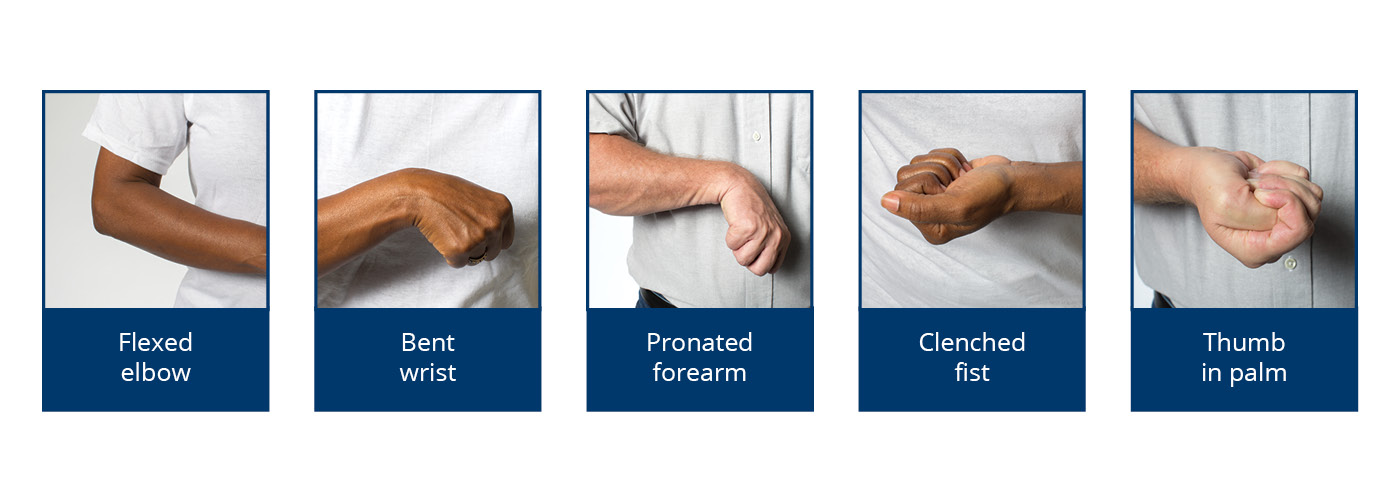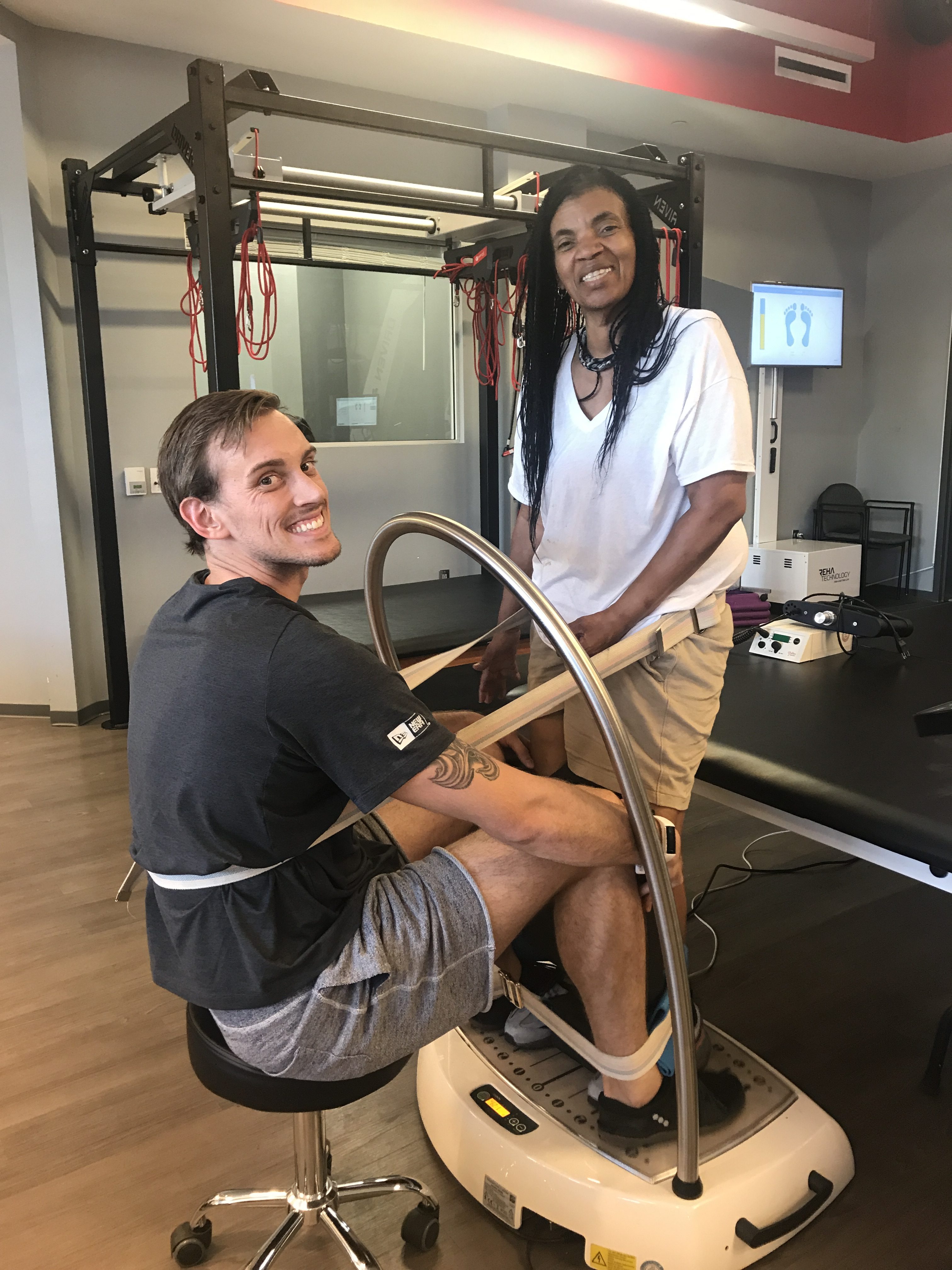MUSCLE SPASTICITY
There are many symptoms that are associated with traumatic brain injuries and spinal cord injuries. Muscle spasticity, also referred to as spasms, is uncontrolled, abnormal muscle tightness due to prolonged muscle contraction. This is a symptom that is very commonly seen in those with traumatic brain injuries, spinal cord injuries, cerebral palsy, stroke, or multiple sclerosis. It is linked to damage to the brain, spinal cord, and motor nerves. Physiologically, the brain is responsible for sending a signal through the spinal cord and nerves to the muscles, which will tell them to contract and relax. After a brain injury, these messages that the muscle sends to the nervous system are unable to reach the brain, or there might be too many disordered signals between the brain and the muscle. Ultimately, this will result in preventing the muscles from responding correctly by causing them to contract involuntarily.
As stated previously, spasticity is a symptom resulting from traumatic brain injuries. There are also many effects that come with having muscle spasticity. People can have one or a combination of the following: 1) jerking of the trunk muscles such as chest, back, abdomen, 2) hyperactive reflexes such as muscle spasms occurring when a limb is lightly touched, 3) stiff and/or very tight muscles at rest causing difficulty in relaxing or stretching, and/or 4) muscle tightness during activities which makes it challenging to control movements. Often when a person is experiencing muscle tightness, the obvious solution is to stretch it out. Those having suffered brain injuries, however, experience muscle tightness much more prominently and on a more intense level – frequently feeling like the muscles are unable to relax or stretch.
Implication of treatment is dependent upon the severity and frequency of the spasms. It is also highly contemplated when they become worse during certain activities, a specific time of day, obstructed sleep, and/or limit the person’s ability to function. There are also times when the severity will fluctuate, which is another factor as well. Muscle spasticity is not always unpleasant or bothersome but can generate problems that give harm or pain to the person. Such problems include discomfort when muscles tighten, restricted motion, difficulty during deep inhalation, falls, inadequate use of hands, limitations on Activities of Daily Living (ADL’s), inability to maintain proper hygiene, skin pressure ulcers, poor positioning in medical equipment, and/or lethargy during the day. When the spasticity becomes severe, that is when it can cause almost continuous spasms, making it a challenge to complete a very simple movement.
Treatment of muscle spasticity can be conducted in many ways. One method is through physical treatment with the goal of  maintaining flexibility and reducing spasticity and risk for permanent joint contractures. This can be
maintaining flexibility and reducing spasticity and risk for permanent joint contractures. This can be  done by performing Passive Range of Motion, standing with support to help stretch the muscles, use of medical equipment (i.e., splints, braces, orthotics), exercise and/or stretching in a pool. Another method used is oral medication, for example, Baclofen, Dantrolene, or Benzodiazepines. Focal interventions could also be used, which is application to a specific location. These types of spasticity call for the use of anesthetic medications, alcohol, phenol, or neurotoxins (such as Botox). These will be injected in the muscles and nerves and will work to reduce muscle hyperactivity to control involuntary contractions in those local areas. For more severe muscle spasticity, some medical professionals will look to install an Intrathecal Baclofen (ITB) Pump. This surgical procedure involves implanting a small pump, usually in the person’s abdomen, which will release small amounts of baclofen in the spine. Consequently, the effect and success of treatment is dependent upon the severity of the spasticity.
done by performing Passive Range of Motion, standing with support to help stretch the muscles, use of medical equipment (i.e., splints, braces, orthotics), exercise and/or stretching in a pool. Another method used is oral medication, for example, Baclofen, Dantrolene, or Benzodiazepines. Focal interventions could also be used, which is application to a specific location. These types of spasticity call for the use of anesthetic medications, alcohol, phenol, or neurotoxins (such as Botox). These will be injected in the muscles and nerves and will work to reduce muscle hyperactivity to control involuntary contractions in those local areas. For more severe muscle spasticity, some medical professionals will look to install an Intrathecal Baclofen (ITB) Pump. This surgical procedure involves implanting a small pump, usually in the person’s abdomen, which will release small amounts of baclofen in the spine. Consequently, the effect and success of treatment is dependent upon the severity of the spasticity.
At DRIVEN we offer a few methods of neurorecovery and rehabilitation that can help target a client’s muscle spasticity. The overall level of physical activity and specific exercises that are being provided by the Activity-Based Trainers also help to aid this as well. We have a Galileo machine that is specific to whole body vibration and a Hand Galileo that targets vibration to the upper extremities. Because of the constant vibrations that are occurring from the machines, the body or a specific body part is relaxed during a muscle spasm. Through a wholistic approach to wellness and being more aware of symptoms that are a result of traumatic brain injuries, we at DRIVEN can better determine which fitness and recovery regimens work best for each client.
 This post has been provided to you by DRIVEN Activity-Based Trainer Aide, Jennine Marquez. To learn more about Jennine, click here.
This post has been provided to you by DRIVEN Activity-Based Trainer Aide, Jennine Marquez. To learn more about Jennine, click here.






